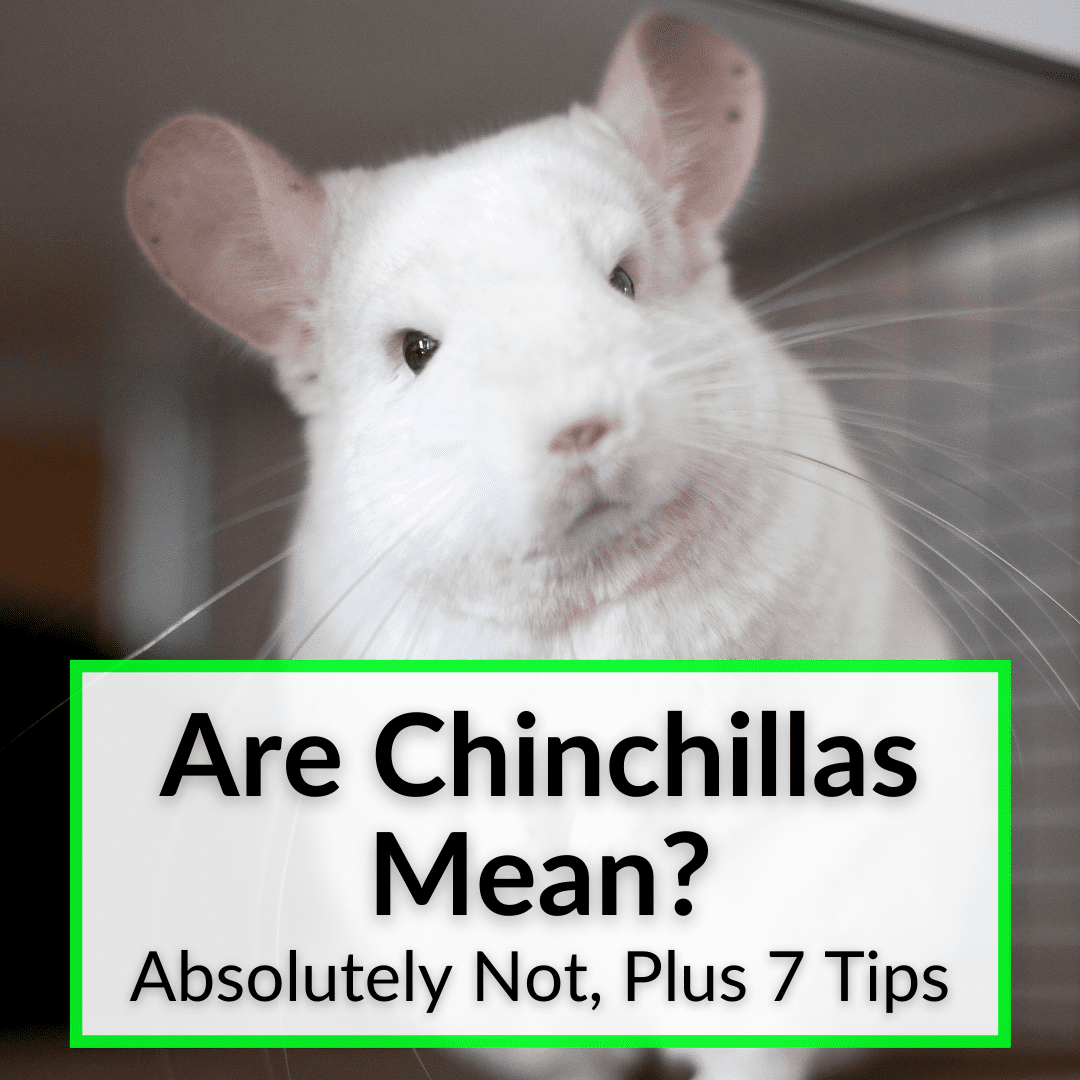
Actually that’s not true. I should say no normal, well-adjusted person wants a mean pet.
I’m going to assume you’re that kind of person and you’re considering a chinchilla.
You may have heard or read somewhere that chinchillas can be mean.
I have no idea where that comes from.
My chinchilla has never been mean and it is exceedingly rare for any chin to exhibit such behavior.
But there are a few situations that could cause it, however unlikely. Keep reading to learn what could cause a chinchilla to be mean and what you can do to prevent it. Most of it is common sense, to be honest.
Contents
- 1 Are Chinchillas Mean?
- 2 7 Tips To Ensure Your Chinchilla Is Never Mean
- 2.1 Tip 1: Don’t Rush The Acclimation Process
- 2.2 Tip 2: Respect Your Chinchilla’s Wishes About Being Held
- 2.3 Tip 3: Don’t Corner Your Chinchilla At The End Of Playtime
- 2.4 Tip 4: Don’t Force The Pairing Of Two Chinchillas Too Quickly
- 2.5 Tip 5: Don’t Allow Others To Invade Your Chinchilla’s Hut-Hideout Space
- 2.6 Tip 6: Remain Ethical And Educated On Chinchilla Care
- 2.7 Tip 7: Always Be Alert With Children And Other Pets Around A Chinchilla
- 3 Chinchillas Are Not Mean: Final Thoughts
Are Chinchillas Mean?
No, chinchillas are not mean. They are friendly and social animals and they make wonderful family pets. Chinchillas rarely display aggressive behaviors towards humans or other animals. They are naturally loving and affectionate creatures.
The line that I’m sure you picked up from that answer is, “chinchillas rarely display aggressive behaviors.”
While that may sound alarming at first glance, trust me, it’s not. It’s nothing to worry about. In fact, in case you need it, I have another full guide on chinchilla behavior here. It will break down everything you can expect when adopting a chinchilla.
Chinchillas are not mean, and they make wonderful and loving family pets.
For those of you who are deciding to stick around for a few extra moments, let’s dive into the specifics.

😕Adopting and caring for a new chinchilla can be intimidating and confusing. But it does not have to be.
Be sure to check out my full digital eBook “Avoiding Critical Mistakes: Ultimate Chinchilla Care eBook” for the best advice, tips, and tricks and supply recommendations to make adopting and caring for a chinchilla much more comfortable and easier to understand.
You can learn more about this eBook offer using the link directly below.
Learn more here:👉 Avoiding Critical Mistakes: Ultimate Chinchilla Care eBook Offer
7 Tips To Ensure Your Chinchilla Is Never Mean
As stated above, if you recently adopted a chinchilla or plan to soon, you have absolutely nothing to worry about. Chinchillas are not known to be mean in any fashion.
Chinchillas are not built to display aggression or act mean towards their owners or other chinchilla mates.
However, there are circumstances that may present themselves that can cause chinchilla fighting between two cage mate chinchillas. And there are certain precautions you can take to make sure you always respect your chinchilla’s boundaries.
This can help ensure that you never have to witness what a mean chinchilla looks or behaves like.
It is not likely that ignoring these precautions will result in aggressive behavior, but they’re the best way to ensure you maintain an environment that’s happy, healthy, and comfortable for you and your chinchilla.
This involves your chinchilla trusting you and feeling safe. Here are my top 7 tips to accomplishing that and ensuring your chinchilla is never anything except happy and ready to play, and always wants to interact and love you as much as you love him or her.
Tip 1: Don’t Rush The Acclimation Process
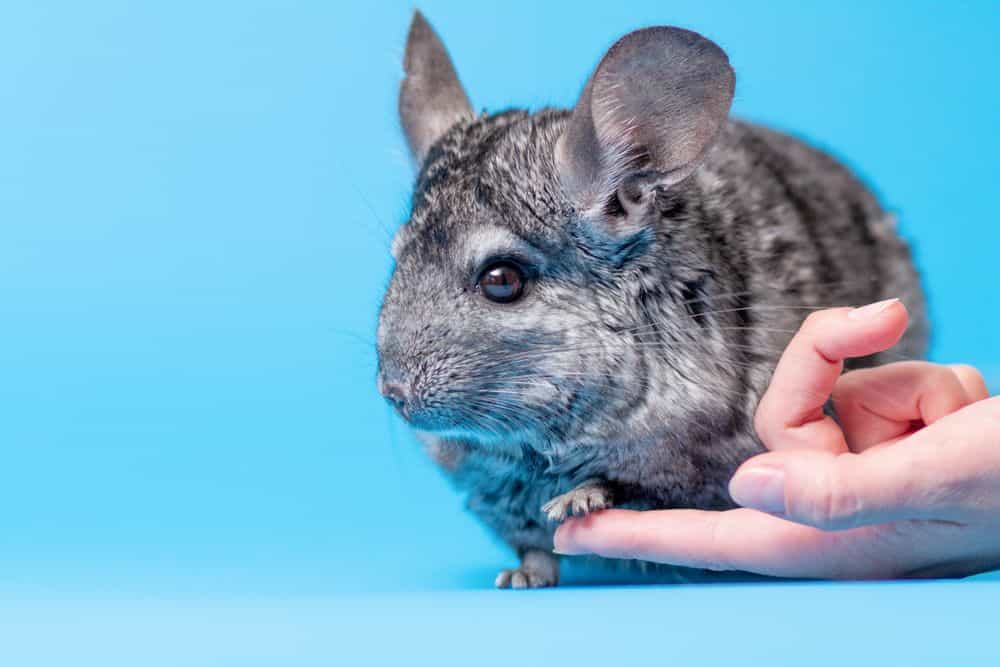
This is the key to everything. Rushing the acclimation process is a big no-no.
In fact, my breeder specifically advised me that play-time is not necessary during the first 10 to 14 days of getting your chinchilla home and getting it situated inside of their new cage.
This makes perfect sense to me.
Think about it like this. Chinchillas are hunted in the wild. They are not the hunters. They are naturally scared and programmed to run away from danger.
This means that in the early stages, a chinchilla’s guard is way up and there won’t be any trust yet between you and the chinchilla. That’s perfectly okay, though, because the trust does come. Chinchillas do get used to their environments quickly.
Once they are situated and understand the visuals, sounds and smells of the home, they will begin feeling much more comfortable.
Be patient and allow these 10 to 14 days to pass.
Trust me. I get it. Those 10 to 14 days are going to feel like a lifetime. You’re excited and want to pet and play with your new chinchilla any chance that you can. That’s completely understandable, and I don’t blame you.
However, the trust that’s formed during these few weeks is critical to how friendly and loving your chinchilla will be following the break-in process. During this time feel free to talk to your chinchilla at the front of the cage and make it comfortable in its new home.
This can include making the cage playful with all the items that chinchillas love to play with inside of their cage. If you haven’t done so already, you can also read my post about the necessary things you need in every chinchilla cage.
To re-emphasize before moving on to tip 2, simply allow your chinchilla to get used to your home, keep it in an ideal room with ideal temperatures for safety, and be patient.
Tip 2: Respect Your Chinchilla’s Wishes About Being Held
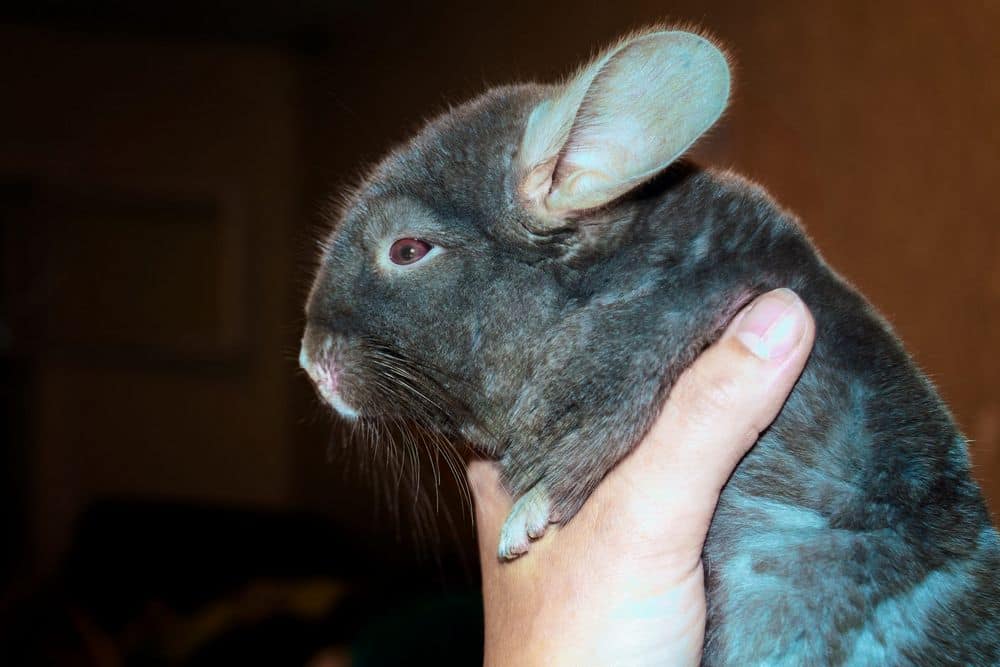
Tip 2 basically comes down to understanding when “no” means “no” and not forcing the issue when it comes to holding your chinchilla.
Some chinchillas don’t mind being held at all. This is usually determined by how a chinchilla is brought up in their very young infancy.
If a chinchilla has always been around people and held and cuddled, it is likely it will love when you hold it too. It might take a little bit until it trusts you, but then it will love being cuddled
Sometimes, however, it takes much more time to get your chinchilla to enjoy being held. This is usually the case when adopting a chinchilla from a store such as Petco or PetSmart.
But there is some good news. You can reprogram this with your chinchilla. You can still get it to enjoy being held and cuddled, if you take it slow and respect its boundaries. IT will just take a bit longer.
If your chin is always trying to flee and run away from you when you try to hold it, don’t push it and simply end the cuddle and holding time.
If it is receptive and doesn’t seem to mind being held, offer it up a safe chinchilla food or a chinchilla-safe treat to illustrate that you like its behavior and wish for it to continue doing this.
This will eventually create a very affectionate and loving chinchilla that knows what behavior you deem good.
Of course, understanding proper handling and holding technique is imperative. Never underestimate the power of proper handling techniques.
You can learn how to get your chinchilla in and out of the cage safely here. This goes a long way in terms of your chinchilla being comfortable with you.
Improper technique is either going to cause your chinchilla to attempt to run away from you or it can potentially cause a fur slip. And your chinchilla may not like being held in the future if that’s the case.
When you pick up a chinchilla, if you want to avoid those possible aggressive and run-away type behaviors, you need to support its entire body. You can do this by grabbing the base of the tail and blocking the front of the chinchilla face to get a firm grip.
Following that, you simply draw your chinchilla closer to your chest. This will help it feel comfortable and ensure it does not exhibit any mean behaviors towards you, now or in the future.
Although it’s rare that a chinchilla is mean due to improper holding and its unlikely that your chinchilla will bite you, this is a situation where it could happen. That is mainly because this can easily startle and scare your chinchilla.
Tip 3: Don’t Corner Your Chinchilla At The End Of Playtime
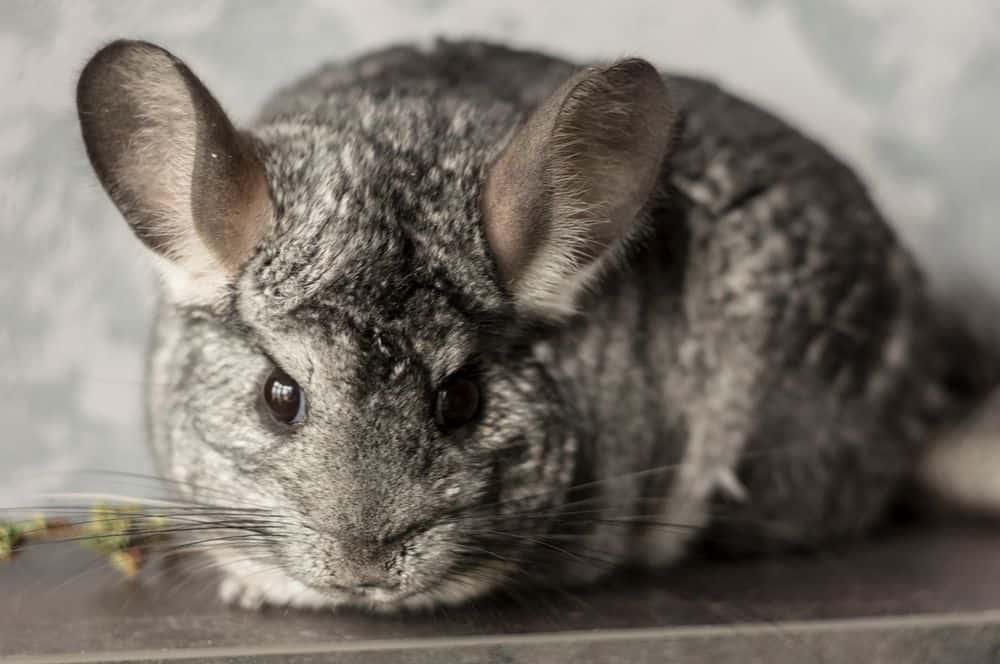
Another big tip I have for you is never to corner your chinchilla. Remember they are small, fragile creatures. Cornering them brings out their natural instincts to run away, slip fur, or even to be mean, though this is rare.
When playtime is over, simply wait for your chinchilla to come to you.
As long as you are in a safe chinchilla room where your chinchilla won’t overheat and where you don’t have loose wires exposed for it to chew, you will be perfectly fine.
You can also use my trick where I place a single raisin or other treat in my chin’s travel cage and just wait for her to stroll right into it. Then I can place her back in her main cage.
In all honesty, I haven’t ever seen my chinchilla be mean, but cornering is something I know has scared her. And I’ve heard similar stories from members in other communities.
As you can tell, I’m honestly struggling to find examples of when a chinchilla would be mean. I do know if it’s going to happen it’s likely to occur out of fear and nothing else. So your best bet is simply to avoid scaring them, and you should never have an issue going forward.
Are chinchillas dangerous if they get angry and aggressive? No, they pose no real danger to us. The worst that can happen is that a bite breaks the skin and gets infected. If your pet ever bites you, disinfect the wound well.
A great way to interact with your chinchilla closely and build a bond even faster is to use a chinchilla playpen. I currently use the Jespet (the first one mentioned in that article on playpens and I love it. So does my chin Chili.
I have been using it for 5 years and believe firmly that it’s the best way to interact with a chinchilla safely and in a close manner, resulting in your chin warming up to you faster.
It also eliminates the need to chinchilla proof a room if you are struggling with that. Overall, it is one of the most essential items to purchase for all new chinchilla owners, in my opinion.
Tip 4: Don’t Force The Pairing Of Two Chinchillas Too Quickly
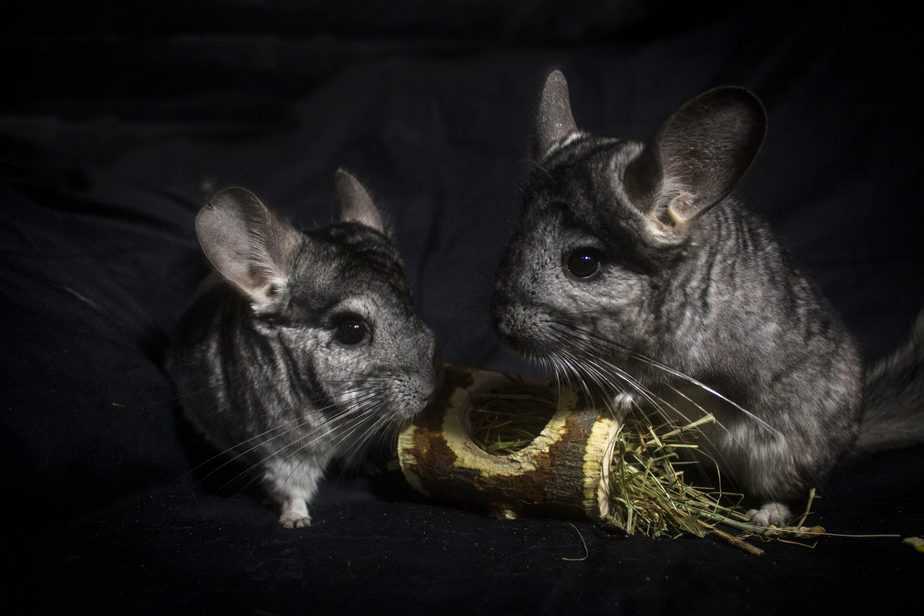
I take everything I have said to this point back. Just kidding, of course.
But seriously, this really is the most likely scenario when you will see a chinchilla be mean or exhibit aggressive behavior.
Sometimes, even chinchillas that have been bonded correctly (and of course ones who have been bonded incorrectly) can have a dispute in the cage. It happens, and it isn’t much you can do to avoid it.
Therefore, it is essential to keep an eye out for signs of conflict taking place.
Often one chinchilla may have a patch of fur missing, or there may be a physical indicator that one chinchilla has been aggressive towards another.
Luckily, it doesn’t happen often and will likely only occur if the chinchillas were rushed into the bonding process or perhaps when a female chinchilla is in heat. But it can happen and is something of which you should always be mindful.
Additionally, some chinchillas are just loners. Chinchillas don’t always do better in pairs, no matter how much of a reputation they have for being a social creature.
Tip 5: Don’t Allow Others To Invade Your Chinchilla’s Hut-Hideout Space
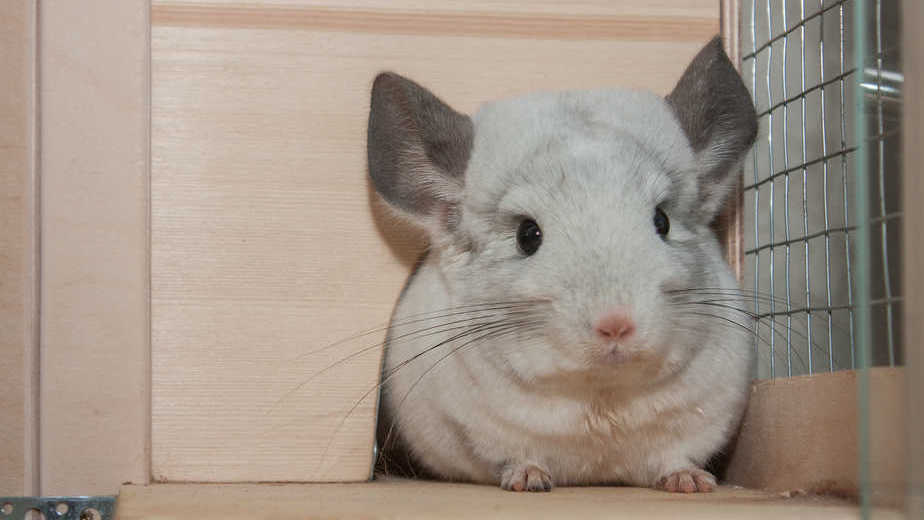
The hut-hideout space is a sacred space for a chinchilla. You should always provide some form of an enclosure inside every chinchilla cage. If you have more than one chin, provide an enclosure for each one.
This is the one place a chinchilla can always go to feel safe.
Remember, in the wild, chinchillas are hunted. Naturally, they need a dark spot where they feel like they are hidden away and safe from danger. So make sure your chin has a spot like this.
To this day, my chinchilla still always sleeps inside of her hut, and it’s her only resting spot outside of the less-used hammock I installed on the top deck of the cage.
With you being the recognized owner that your chinchilla can trust and the fact it knows your smell and voice, you may be able to poke and prod a little more, but that doesn’t go for everyone who comes over to take a gander at your chinchilla.
Don’t have friends and other individuals shoving their hands inside of their hut hideouts, attempting to grab your chinchilla or even pet them. In fact, it is best if you avoid this behavior, too.
Naturally, most chinchillas will come right out and be friendly. But if for some reason, it is choosing not to, invading its personal safe space anyway could result in an otherwise friendly chinchilla suddenly becoming mean.
Again, I’ve never seen my chinchilla be mean in these situations, but I do know it is possible. So give your chin it’s one private spot and don’t invade that privacy. It’s always better safe than sorry in these situations.
Tip 6: Remain Ethical And Educated On Chinchilla Care
This is more practical advice than anything else. Nothing in this tip is directly going to cause your chinchilla to mean or friendly.
However, always doing the best you can for your chinchilla, or any pet for that matter, is the best way to ensure that your chinchilla stays happy and friendly.
Chinchillas are very easy to care for and do not need much except the proper chinchilla foods and love.
With some quality playtime each day and some simple learning and educating, you can ensure you never have a mean chinchilla on your hands. That’s been the experience for me thus far at least.
Tip 7: Always Be Alert With Children And Other Pets Around A Chinchilla
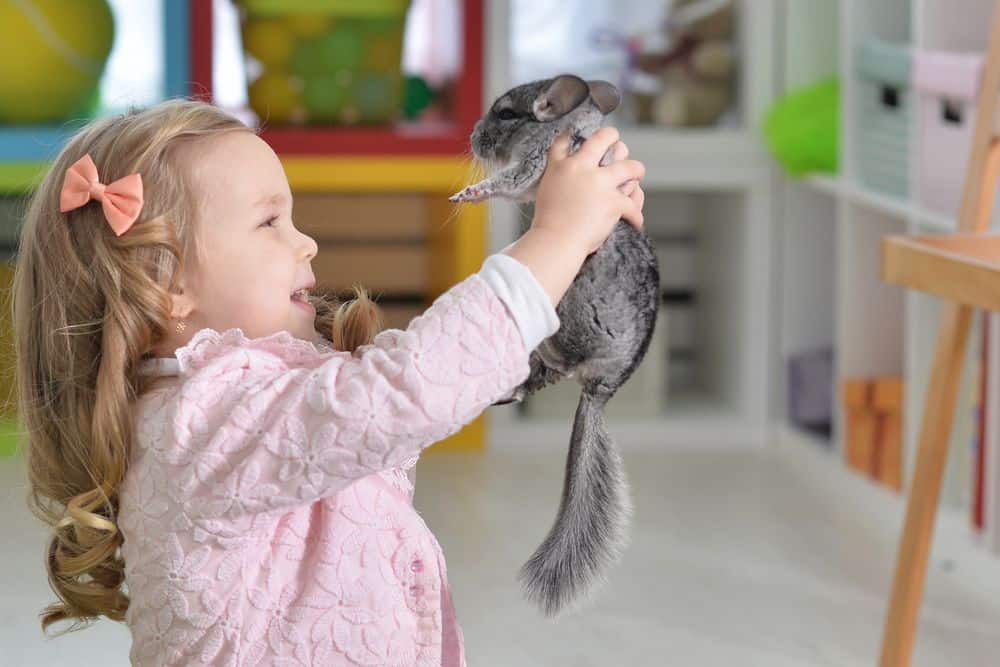
My last and final tip of the day is to always exercise good judgment in specific scenarios. I’ll give you an example.
My chinchilla seems to love my son, but he pushes her buttons from time to time.
Now, she has never even acted as if she would hurt him or bite him, but she certainly shows signs that she is done playing for the day. She has also slipped her fur once, due to him being a little too wild.
This could also be another scenario where you might have a potentially mean chinchilla on your hands. Chinchillas are great with kids, but it’s best to be present when young kids are around your chinchilla.
Additionally, chinchillas and dogs don’t need to be interacting. It’s not safe and will end badly.
It’s not that your chinchilla would ever be mean to the dog. It is more likely that it will be scared of the dog, which can causes overheating and potentially lead to death.
Chinchillas Are Not Mean: Final Thoughts
Listen, new chinchilla owners, and future chinchilla owners. This honestly isn’t very hard.
I do get your concern, however. I was the same way. I did tons of research and relied a lot on online forums for most of my answers. But the answers were often hard to find. And it was hard to tell good advice from bad.
In complete honesty, that’s why this blog was born.
I knew people needed more clear answers that got straight to the point, to help curb some of the anxiety that comes with being a new chinchilla owner. Don’t overthink the process and everything will be just fine.
At the end of the day, you will rarely witness a mean chinchilla. Chances are you never will. I haven’t.
Chinchillas are not programmed to act this way.
They are very social and loving creatures and crave interactions with their owners or other chinchillas.
They don’t need much to keep happy except some dedicated time each day to play out of their cage, so they can effectively act like chinchillas by jumping and climbing all over the place.
That’s it, that’s all and nothing fancy to it. However, I do have a feeling I may get some pushback on this topic. I welcome that
I’d love for you to share your stories by dropping a comment below.
Has your chinchilla ever been mean?
If so, what caused the mean and aggressive behavior?
Please share with the rest of us.
As always, Chili and I appreciate you and hope to see you again soon. Thanks for reading!
Leave a Reply